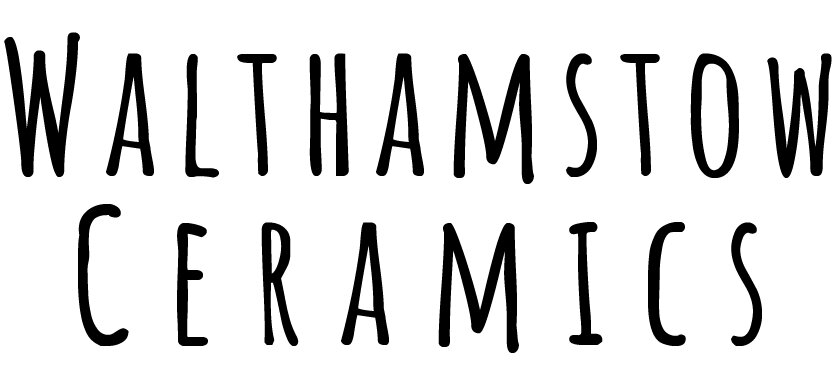Ceramic painting is supposed to be enjoyable so try not to get too caught up with ‘perfection’… perfection is boring anyway! Mistakes are normally easily rectified so don’t despair if you’ve painted in the wrong place or your baby’s footprint is missing toes! The paint we use is ‘underglaze’ but I call it paint here for ease.
Read through these hints and tips which might help. Download instructions and see the paint chart again too. If you’ve enjoyed the process of painting then you’re more likely to be happy with the outcome, so grab yourself a cuppa and a cake and give yourself enough time to have a play.
1. Handprints and footprints….
Think about where you want to print. On this bauble the print was underneath, so not ideal. If you need to wash it off do so with a sponge as soon as possible and let it dry completely.
You can see a slight tinge of green on the finished item but it’s not that noticeable. Often paint marks will disappear completely.
Missing fingers... It happens! If you like the print and don’t want to start again just use a paintbrush with a tiny amount of paint (almost dry) to dab some fingers in.
Glazed bauble with the fingers dabbed in place. Completely fine!
Notice you can see all the creases in the hand. This is because there’s a lighter coating of paint. You loose a bit of boldness but you get more detail.
2. writing…
Another example of a mistake. This time the ‘a’ was a bit tricky to write in paint. It was cleaned off using the flat paintbrush. Not much water on it - more damp than wet.
The mistake rectified. Make writing super simple and not too detailed to avoid mistakes. But this one was easily fixed. Painted using a writing tool.
Remember pencil lines disappear. It’s a good idea to map out where you want writing & prints if they need to be in a specific place, like they have done on this plate.
Using a letter set for printing names: use a paintbrush and paint onto a sponge, then sponge the paint onto the letter set pieces and press in place. This takes a bit longer than writing so I normally charge a little more if you want me to do it. But give it a go if you have a letter set!
3. Decorating and brush strokes…
Working alongside a little water often helps. The paint you receive should be the right consistency but sometimes a dry brush and an unstirred pot can result in a dry consistency. See above.
The dry lines are easily rectified by going over the marks with freshly stirred paint. If you need a thinner consistency (for extra sharp lines) you can add the tiniest drop of water to the paint, like I have using the squiggly lines above. Practice on paper first to get the consistency you want. Thicker paint is great for bold colour and decorations like polka dots so don’t thin it out too much.
Example of lettering painted with a paintbrush using a little water in the paint for a smooth line. Lovely handwriting by Rubin’s mum, clear and spaced out.
If you want block-colour then build up three layers of paint. You can do this using a paintbrush or a sponge. This poor example (not a customers!) is done using a sponge and white areas are clearly visible. The top left area has three layers so that is what to aim for.












